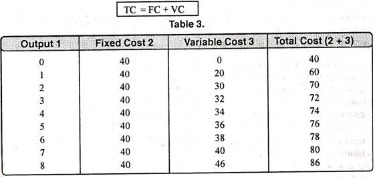Enter an adjusting entry for a reconciliation in QuickBooks Online

Also, consider timing differences, such as checks that have been issued but not yet cashed, or bank fees that have yet to be recorded in QuickBooks. Match each transaction listed in your bank statement with those in QuickBooks Desktop. In the Reconciliation window of QuickBooks Desktop, mark off each transaction that aligns with your bank statement. This creates an expense transaction if the difference is negative, or an income transaction if the difference is positive. For other types of accounts, QuickBooks opens the Make Payment window.
Step 3: Compare QuickBooks entries with statements transactions
This is a crucial step in the accounting process as it helps in identifying and rectifying any discrepancies, errors, or missing transactions that may have occurred during the earlier months. By comparing the transactions recorded in QuickBooks with the actual bank statements, businesses can ensure that their financial records accurately reflect the true state of their accounts from previous months. This process involves meticulously reviewing each transaction entry in QuickBooks and cross-referencing it with the corresponding entry in the bank statement. By performing this comparison, discrepancies such as missing transactions, duplicate entries, or incorrect amounts can be readily identified.
Also, any adjustments or manual journal entries that have been made since the last reconciliation need to be accurately documented in the system. To reconcile, simply compare the list of transactions on your 2020 federal income tax filing requirements bank statement with what’s in QuickBooks. This verification process is essential in identifying and rectifying any irregularities, providing a clear and accurate portrayal of the company’s financial standing.

Step 1: Make sure you have everything needed to reconcile in QuickBooks
This process involves checking that all income and sales are correctly entered and categorized. Additionally, verify that all expenses, including bills, receipts, and cash transactions, are up to date. This phase is crucial as it ensures accuracy and integrity in financial reporting, aiding in identifying any discrepancies or errors that need to be resolved before finalizing the reconciliation process.
Step 1: Setting up for reconciliation in QuickBooks Desktop
We’ll delve into reconciling previous months, rereconciliation, and marking transactions as reconciled in QuickBooks Online. If you’re ready to streamline your reconciliation process and gain a deeper understanding of how to reconcile in QuickBooks, read on to become a reconciliation pro. Reconciling statements with your QuickBooks company file is an important part of account management. It ensures that QuickBooks entries align with those in your bank and credit card account statements.
Accessing the reconcile window in QuickBooks Desktop is the initial step in the reconciliation process, enabling users to match the financial records with the bank statement and ensure accuracy. Entering the ending balance in QuickBooks Online is a crucial step in the reconciliation process, ensuring that the financial records align with the closing balance of the bank statement. When you create a new account in QuickBooks, you pick a day to start tracking transactions. You enter the what is a contra asset account definition and meaning balance of your real-life bank account for whatever day you choose. We recommend setting the opening balance at the beginning of a bank statement.
- This process typically begins by obtaining the bank statement and gathering all relevant transaction details from within QuickBooks Desktop.
- After you reconcile, you can select Display to view the Reconciliation report or Print to print it.
- If everything matches, you know your accounts are balanced and accurate.
- When choosing an account to reconcile, ensure it corresponds with the one on your statement.
- By meticulously reviewing each transaction, users can detect potential errors such as duplicates, missing entries, or incorrect categorizations.
- Ensure that the Statement Date in QuickBooks Desktop corresponds with your actual bank statement, making adjustments as needed.
This lets you write a check or enter a bill to pay to cover what does a positive cash flow mean the outstanding balance. With its ability to integrate seamlessly into QuickBooks, reconciliation streamlines the financial management process, ensuring compliance and transparency. Since all of your transaction info comes directly from your bank, reconciling should be a breeze.
Just like balancing your checkbook, you need to review your accounts in QuickBooks to make sure they match your real-life bank and credit card statements. Just like balancing your checkbook, you need to review your accounts in QuickBooks to make sure they match your bank and credit card statements. Comparing transactions in QuickBooks with the bank statement is essential to identify any disparities and ensure the accurate alignment of financial records with the official bank records. Gathering the bank statement and transactions is the initial step in reconciling a bank statement in QuickBooks, enabling the comprehensive matching of financial data with the official bank records. Entering the ending balance in QuickBooks Desktop is a critical step in the reconciliation process, ensuring that the financial records match the closing balance of the bank statement accurately. If you would like to streamline your reconciliation process in QuickBooks, Synder is the answer.
Synder is a comprehensive financial management software that specializes in automating accounting processes for businesses, particularly those operating in ecommerce and using online payment platforms. This finalization stage is vital for ensuring the accuracy and integrity of the financial data, providing a clear overview of the company’s financial position and allowing for informed decision-making. Accessing the reconcile tool in QuickBooks Online is the initial step in the reconciliation process, allowing users to review and match the financial records with the bank statement.
Before you start with reconciliation, make sure to back up your company file. QuickBooks Online and Wise Business can be connected and automatically synced. Select the account you wish to reconcile from the Account drop-down menu. Reconciling is an important task that you should carry out regularly. In cases involving significant or complex issues, it is recommended to seek the assistance of an accounting professional. After you reconcile, you can select Display to view the Reconciliation report or Print to print it.
Average Rating